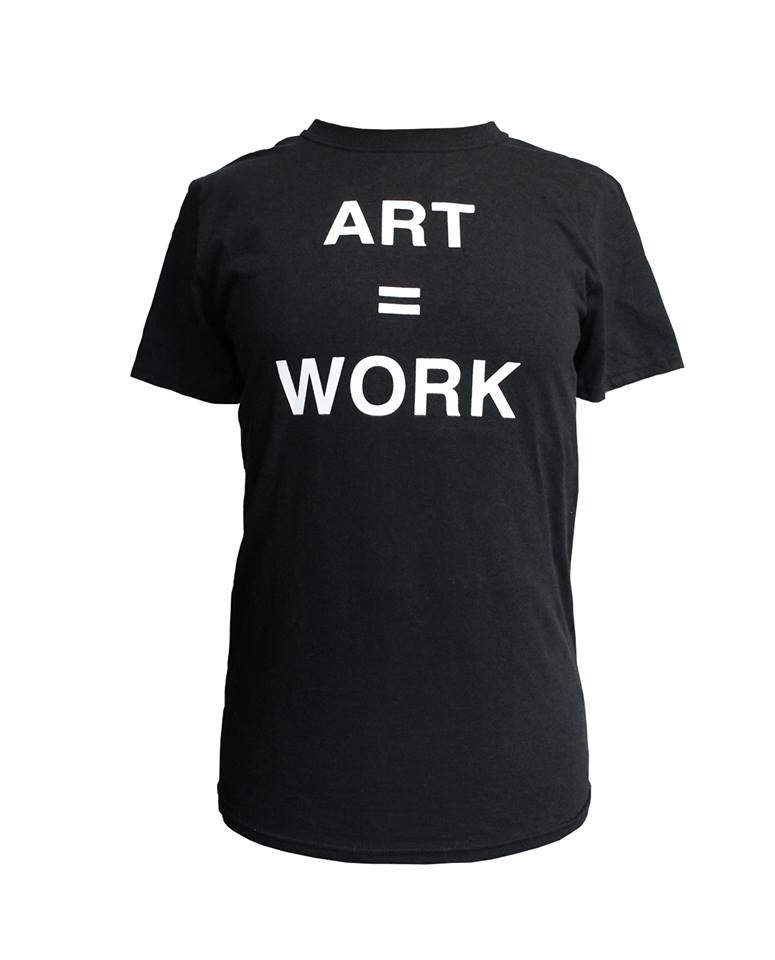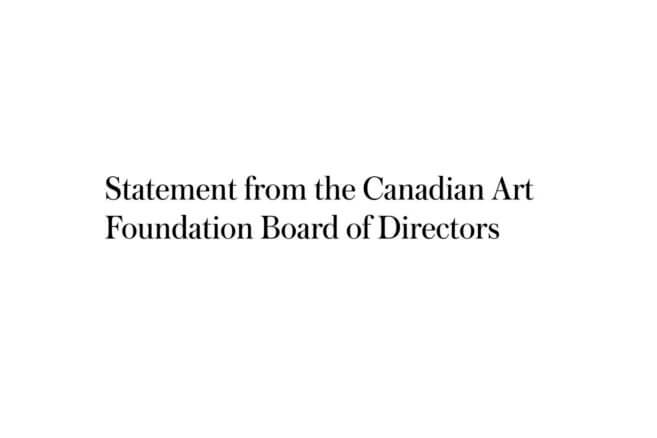Artist’s Resale Right
The Nunavut Arts and Crafts Association comes out in favour of Artist’s Resale Right after record auction sale for Kenojuak Ashevak’s Enchanted Owl. CARFAC has been advocating that artists or their estates get a percent of secondary market sales for some time. Now, “we support the CARFAC bid to have the resale rights given back to the artist,” NACA’s Janet Brewster tells APTN. “Unfortunately Inuit die at a younger age than non-Inuit do,” said Brewster. “The estates might be able to benefit from these sales and I think that’s really important.” (APTN)
Further Artist’s Resale Right momentum has been highlighted. “I am glad Inuit art is placed so highly, but it is terrible that the artist [and] their families are left in the dust,” Calgary-based Inuk artist Kablusiak told the CBC. That same CBC article quotes House of Commons committee testimony from CARFAC representative Joshua Vettivelu, who highlighted that “Indigenous artists, specifically those in the North, suffer from a lack of access to the primary market. And if they do have access, it is often exploitative….The structural conditions of colonialism, which are very real, often force Indigenous artists to sell their work for lower price points to make ends meet and to provide for their families and communities.” (CBC)
But Art Dealers’ Association of Canada is still opposed to an Artist’s Resale Right. According to APTN, an ADAC representative told the House of Commons committee the following this fall: “The average income of Canadian artists is well below the average for Canada’s working population, and there are a growing number of artists trying to practice their profession and make a living out of their art in a small market…. ADAC refutes the argument that the resale right is the best way to support artists in need. The secondary market typically favours established artists with successful careers.” (APTN, CBC)
Passages
Elisapee Ishulutaq has died. “Renowned artist Elisapee Ishulutaq, OC passed away on December 9, 2018 in Panniqtuq (Pangnirtung), NU at the age of ninety-three,” reports Inuit Art Quarterly. She was renowned for prints, oil stick drawings and being a founding member of the Uqqurmiut Inuit Artists Association, among other accomplishments. “I try and make prints so that people will know about them,” she once said, “so that the next generations, my grandchildren, my children and people would know of who I was and what I have gone through.” (Inuit Art Quarterly)
Adrienne Allison has died. “Alison died on Nov. 24 in Toronto after a two-year battle with breast cancer,” the Globe reports. In terms of sculpture, she was best known for the War of 1812 memorial on Parliament Hill, but she also sculpted many prosthetics for children and adults. “She even dabbled in the movies, creating false eyes for David Cronenberg’s 1988 horror-thriller Dead Ringers.” (Globe and Mail)
Leadership
A chat with Marc Mayer on the eve of his retirement. The Globe reports on a National Gallery of Canada send-off for CEO Marc Mayer, who retires in January. “The gallery’s foundation said $3-million was raised to mark Mayer’s departure. Two works were also donated in his honour: The Last of the Hurons (Zacharie Vincent), an 1838 portrait by Quebec painter Antoine Plamondon, and Parade, Party or Protest, a 2003 piece by British Columbia artist Geoffrey Farmer.” Mayer tells the Globe of his tenure’s ups and downs: “For a lot of Canadians to be talking about art is always a good thing, no matter what it is they’re saying.”(Globe and Mail)
NSCAD is seeking a new president. A posting for the job popped up on Akimbo this week. “NSCAD seeks a new President to build on its solid reputation and continue to deliver a strong focus to student experience, student recruitment, financial stability, and a facilities strategy that will leave a legacy and position the university to reach its full potential,” says the posting. NSCAD reps say current president Dianne Taylor-Gearing, appointed in 2014, will be completing her five-year contract in August 2019. Recruiters say they look to have someone announced by the spring. (Akimbo)
Public Art
Bryan Adams’s Reckless gets a public art tribute in his childhood home of North Vancouver. BC artist Kevin Schmidt—already known internationally for artworks that combine coloured lights and popular music—has turned his sights to Bryan Adams’s Reckless. Coloured lights on the exterior of North Vancouver’s Polygon Gallery “are timed to a soundtrack composed by Schmidt, based on the 1984 album of the same name by Canadian singer-songwriter and former North Vancouver resident Bryan Adams. Schmidt’s soundtrack can be heard on the building’s outdoor speakers, or by tuning in to 87.8 on FM radio.” (Polygon Gallery)
Inuit art is a significant component of the new Canadian High Arctic Research Station. Among the works is a floor-embedded whale and fish design by Tim Pitsiulak, the large drawing Many Stories by Ningiukulu Teevee and a glass etching by Bobby Anavilok. (CBC)
Markets
Canadian wit finds fans at Miami fairs week. According to Artnet, Rodney Graham’s lightbox Unused Prop: French Telephone (2018) sold for $60,000 at 303 Gallery’s Art Basel Miami booth. And The Cut took an interest in Chloe Wise’s sculpture Chanel Lasagna, brought to NADA Miami by Canadian gallery Division. The piece “is exactly what it sounds like: a giant Chanel makeup case filled with lasagna. Sadly, the food inside is fake, but its case was actually sent to editors, models, influencers, and artists like Wise by the brand some time ago,” says the Cut’s writer. “I remember seeing it all over Instagram and watching people unbox it with glee to find an array of beauty products (not lasagna) inside. Now, it’s got a second life.” (Artnet, The Cut)
A Canadian artist who made his market on Instagram takes a pause. “Brad Phillips is in many ways the poster boy for why artists should be on Instagram. Thanks to the platform, he got a book deal with a prestigious British publisher, mounted solo shows in East Hampton and Oslo, and made direct sales by DM,” says Vulture. “But in the past two and a half years, Phillips tells me that his feelings toward the platform have become more confused. ‘I don’t like it. I don’t like that I need it,’ he says.” (Vulture)
Access
Art-by-prescription programs grow in Canada. The Royal Ontario Museum has joined the Montreal Museum of Fine Arts in its public pilot programs in this matter. More may be coming as well. (Canadian Art)
The Glenbow Museum renews funding for Free First Thursdays. The program “will continue in the new year thanks to the ongoing support of Servus Credit Union. On the first Thursday of every month in 2019, Glenbow will be open late and Servus Credit Union will be sponsoring free admission for everyone from 5 to 9 p.m. Since its launch in 2016, Free First Thursday Nights have provided access to over 56,000 visitors.” (press release)
Surprises
$50 million in funding has been revoked for New Brunswick Museum. The museum had been planning to use the provincial government funds toward a much-needed new building. Its current collections facility leaks and has a faulty roof. (Canadian Art)
Artist finds their images reproduced, without their permission, on fabric. Artist Meera Sethi posted her artwork images and fabric images side by side on her Instagram feed. “The mother of my friend @kareempuff (pictured above and of @lawhorevagistan fame) found this polyester fabric on Fashion Street in Mumbai with artwork DIRECTLY lifted from my work (without my permission),” Sethi writes. But she has found it difficult to track down the company that made the material. (Instagram)
Prepping for a bio-art opera, perhaps. Windsor artist Jennifer Willet was “recently awarded a Tier 2 Canada Research Chair in Art,” the Windsor Star reports. “It’s a $100,000 annual award for the next five years that she plans to use developing a completely new genre of bio-art performance.” It adds: “One of Willet’s pieces, The Great Lakes Algae Organ, is currently displayed at the Art Gallery of Windsor. A crank-style organ plays calliope music while a pump pushes green algae through tubes on the colourful side panel of a circus wagon.” Willet says her future work may be an opera of some kind. (Windsor Star)

 CARFAC Newfoundland and Labrador produces t-shirts with the late Mary MacDonald’s message “Art = Work.” The organization also advocates for Artist's Resale Right. Photo: Facebook / VANL-CARFAC.
CARFAC Newfoundland and Labrador produces t-shirts with the late Mary MacDonald’s message “Art = Work.” The organization also advocates for Artist's Resale Right. Photo: Facebook / VANL-CARFAC.




